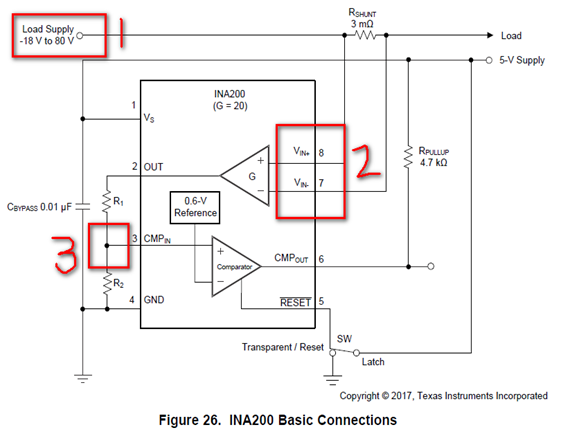Hi Dear expert,
My customer uses INA202 to detect Power amplifier current. They found some parts during load supply(PA supply) ramps up to 48V, when it reaches to 0.5V, CMPin will reach to 0.6V and CMPout will become high and falsely power down PA.
Below is the schematic:
In customer's application, Rshunt=10ohm, R1=18.7kohm, R2=6.5Kohm.
Below is the load supply and Cmpin wave form:
Blue line is the load supply, starting from 0V to 48V. When it reaches to around 0.5V, green line is the CMpin voltage, it will reach to 0.6V. and it will trigger PA protection, and will shut down PA supply.
We have done several tests:
1. During PA supply voltage ramps up to 0.5V, some parts CMPin voltage will reach to 0.6V, while some parts will reach to 0.3V. if CMPin reaches to 0.6V, it will falsely trigger PA protection. i calculate the current, 0.6V CMPin means Vsense=24mV, Shunt current=2.4A. While in normal PA working condition, current=1.7A.
2. Customer tried to short Vin+ and Vin-. But still observe CMPin voltage reaches to 0.6V in bad parts when load supply reaches to 0.5V.
Support needs:
1. Can you please review the schematic and check whether Rshunt is proper?
2. Can you please reproduce this on demo board to see when load supply is 0.5V, whether CMPin will become 0.6V or some voltage level?
Thanks very much for your reply.
Joyce




